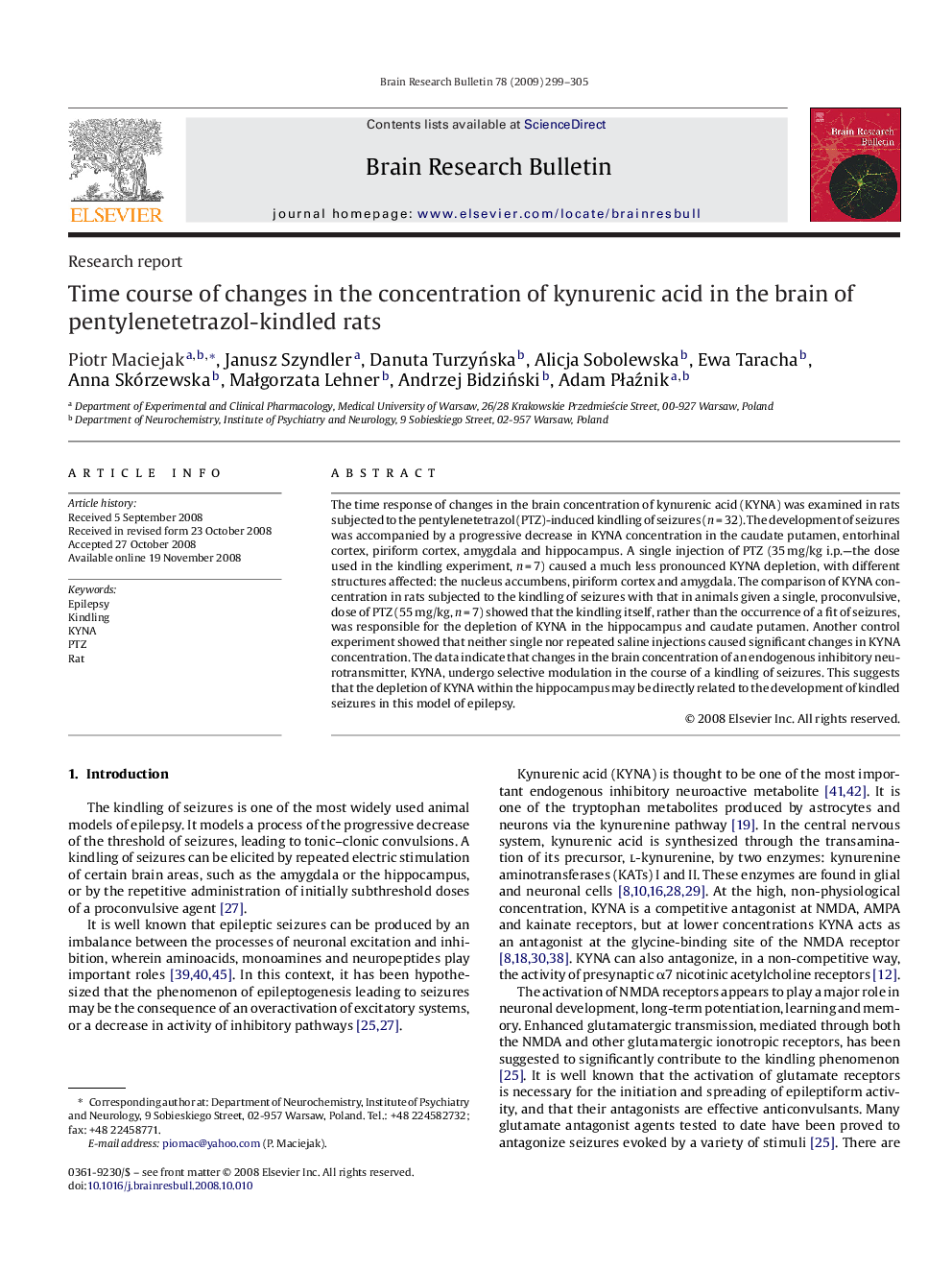| Article ID | Journal | Published Year | Pages | File Type |
|---|---|---|---|---|
| 4319740 | Brain Research Bulletin | 2009 | 7 Pages |
The time response of changes in the brain concentration of kynurenic acid (KYNA) was examined in rats subjected to the pentylenetetrazol (PTZ)-induced kindling of seizures (n = 32). The development of seizures was accompanied by a progressive decrease in KYNA concentration in the caudate putamen, entorhinal cortex, piriform cortex, amygdala and hippocampus. A single injection of PTZ (35 mg/kg i.p.—the dose used in the kindling experiment, n = 7) caused a much less pronounced KYNA depletion, with different structures affected: the nucleus accumbens, piriform cortex and amygdala. The comparison of KYNA concentration in rats subjected to the kindling of seizures with that in animals given a single, proconvulsive, dose of PTZ (55 mg/kg, n = 7) showed that the kindling itself, rather than the occurrence of a fit of seizures, was responsible for the depletion of KYNA in the hippocampus and caudate putamen. Another control experiment showed that neither single nor repeated saline injections caused significant changes in KYNA concentration. The data indicate that changes in the brain concentration of an endogenous inhibitory neurotransmitter, KYNA, undergo selective modulation in the course of a kindling of seizures. This suggests that the depletion of KYNA within the hippocampus may be directly related to the development of kindled seizures in this model of epilepsy.
